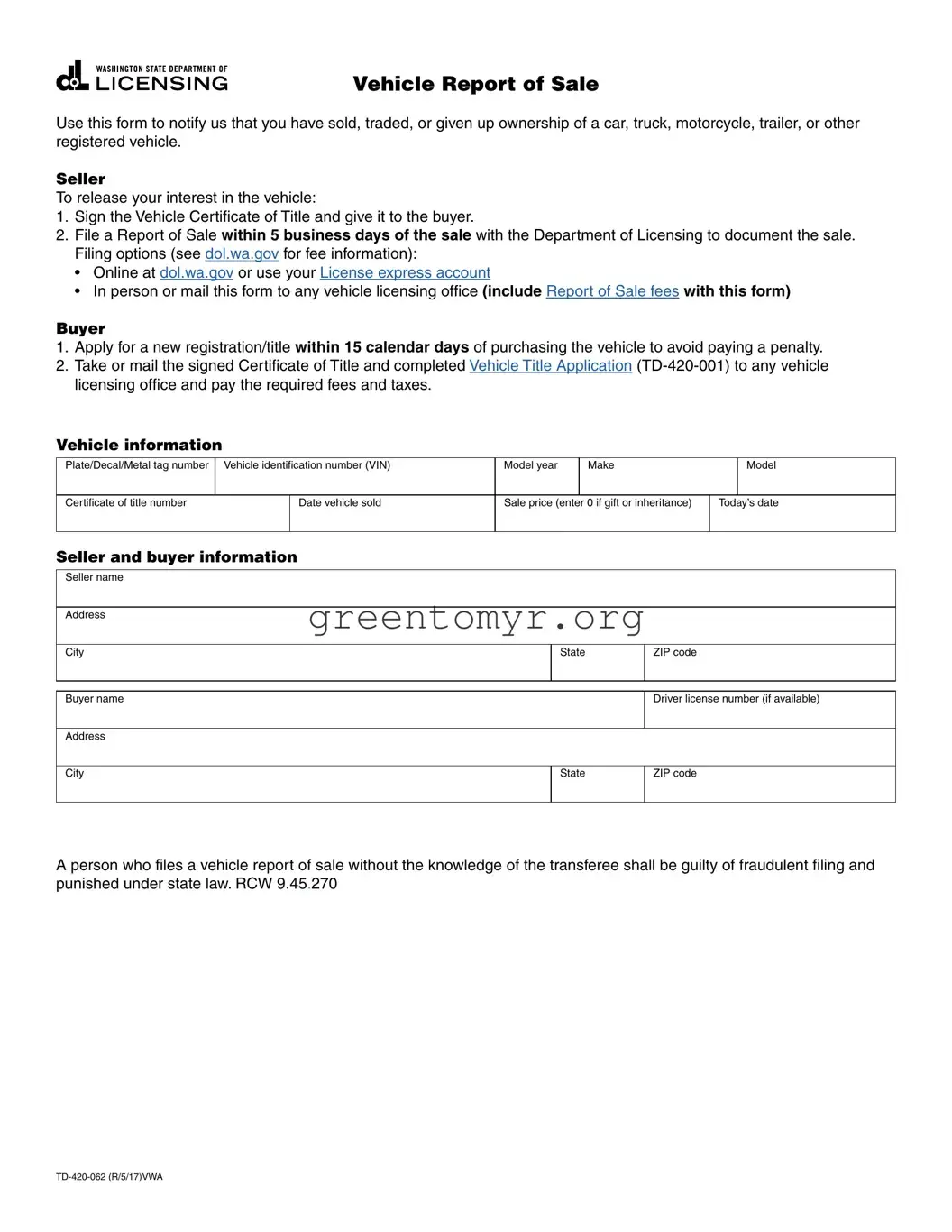Vehicle Report of Sale
Use this form to notify us that you have sold, traded, or given up ownership of a car, truck, motorcycle, trailer, or other registered vehicle.
Seller
To release your interest in the vehicle:
1.Sign the Vehicle Certificate of Title and give it to the buyer.
2.File a Report of Sale within 5 business days of the sale with the Department of Licensing to document the sale. Filing options (see dol.wa.gov for fee information):
•Online at dol.wa.gov or use your License express account
•In person or mail this form to any vehicle licensing office (include Report of Sale fees with this form)
Buyer
1.Apply for a new registration/title within 15 calendar days of purchasing the vehicle to avoid paying a penalty.
2.Take or mail the signed Certificate of Title and completed Vehicle Title Application (TD-420-001) to any vehicle licensing office and pay the required fees and taxes.
Vehicle information
Plate/Decal/Metal tag number |
Vehicle identification number (VIN) |
Model year |
Make |
|
Model |
|
|
|
|
|
|
|
Certificate of title number |
|
Date vehicle sold |
Sale price (enter 0 if gift or inheritance) |
Today’s date |
|
|
|
|
|
|
|
Seller and buyer information
Seller name
Address
City |
State |
ZIP code |
|
|
|
|
|
|
Buyer name |
|
Driver license number (if available) |
|
|
|
Address |
|
|
|
|
|
City |
State |
ZIP code |
|
|
|
A person who files a vehicle report of sale without the knowledge of the transferee shall be guilty of fraudulent filing and punished under state law. RCW 9.45.270
TD-420-062 (R/5/17)VWA

